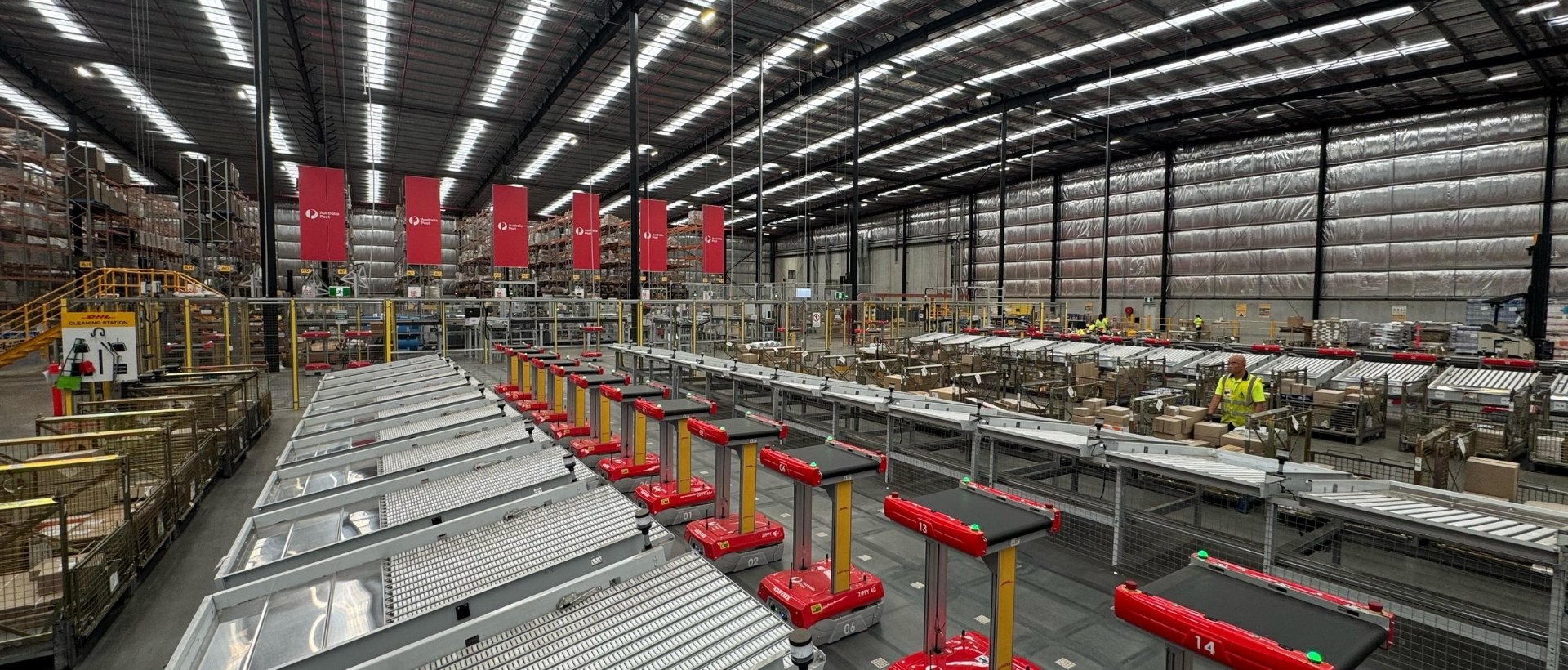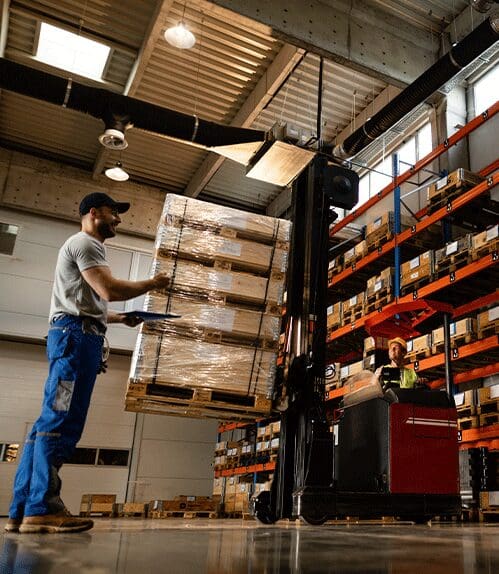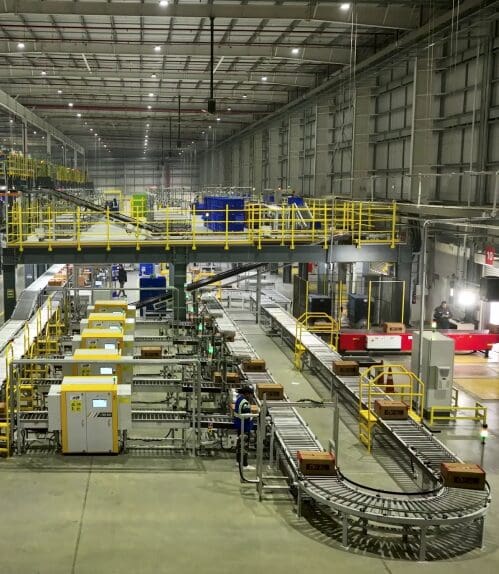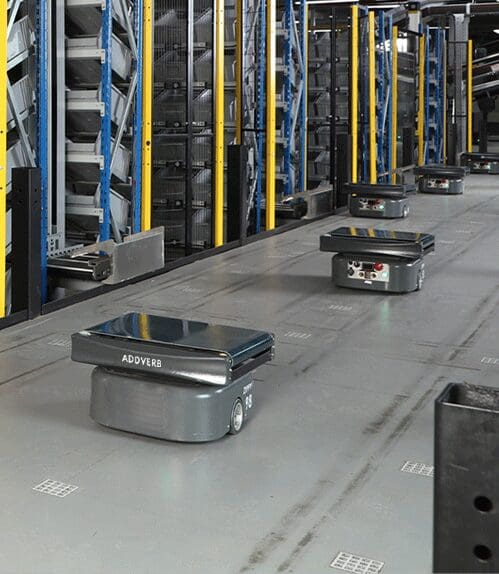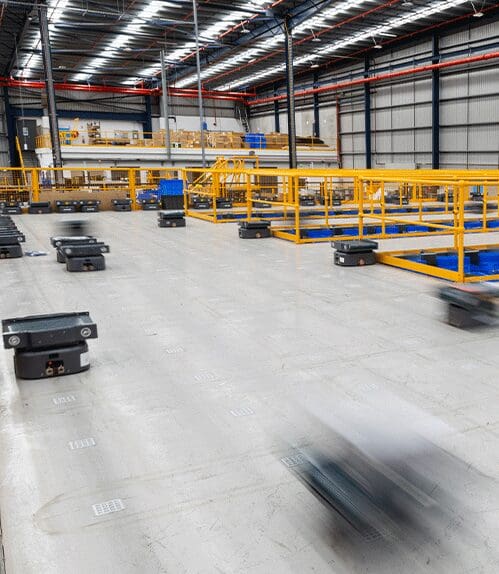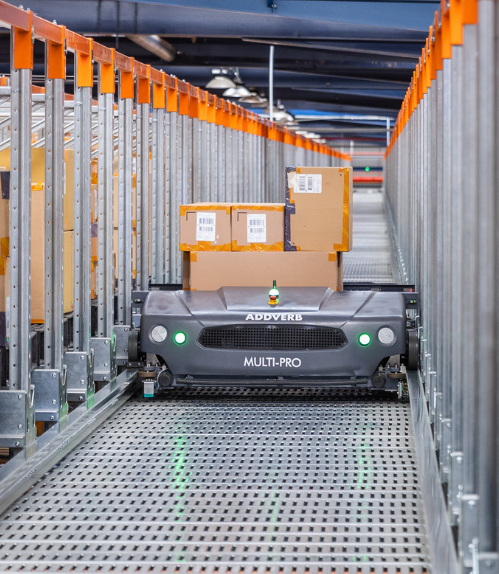Table of Contents
With pressure on supply chains to get faster and more accurate, businesses are utilising tools and equipment that automate warehousing; systems and software.
Warehouse automation is changing the way warehouses will be organized, stored, tracked, and moved.
In this blog, we will explore the top warehouse automation case studies by Addverb that showcase how companies are re-inventing their operations to gain a competitive edge
6 Leading Warehouse Automation Success Stories
Transforming Reliance’s Fashion & Lifestyle Distribution Centre
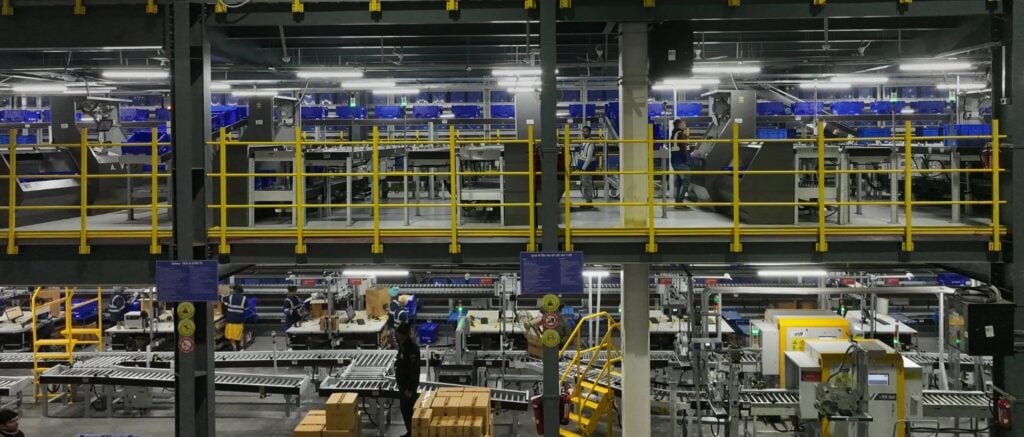
Reliance, a leader in fashion and lifestyle, partnered with Addverb to create a cutting-edge Omni-Channel Automated Distribution Centre in Sultanpur, India.
The goal is to maximise the potential of the Fashion and Lifestyle Distribution Centre by transforming it into an intelligent automated warehouse.
With a size of 2,00,000 sq. feet, and capacity of 1.5 crores of units, this Omni-Channel Automated Distribution Centre is able to cater solely to B2B and B2C requirements with high accuracy.
Strategy: We implemented automation solutions such as ASRS system , multi-level shuttles, smart conveyors and our in-house warehouse execution system, Concinity, resulting in improvements in operational efficiency, accuracy, and volume.
Result: This case study demonstrates that these pioneering robotics and intelligent software have enabled us to automate processes from receiving to dispatch in the distribution centre and raise the bar for the industry, and as a result the system achieved a remarkable throughput of 2.7 lakh units per day.
Empowering Maersk with Flexible Fulfilment at Scale
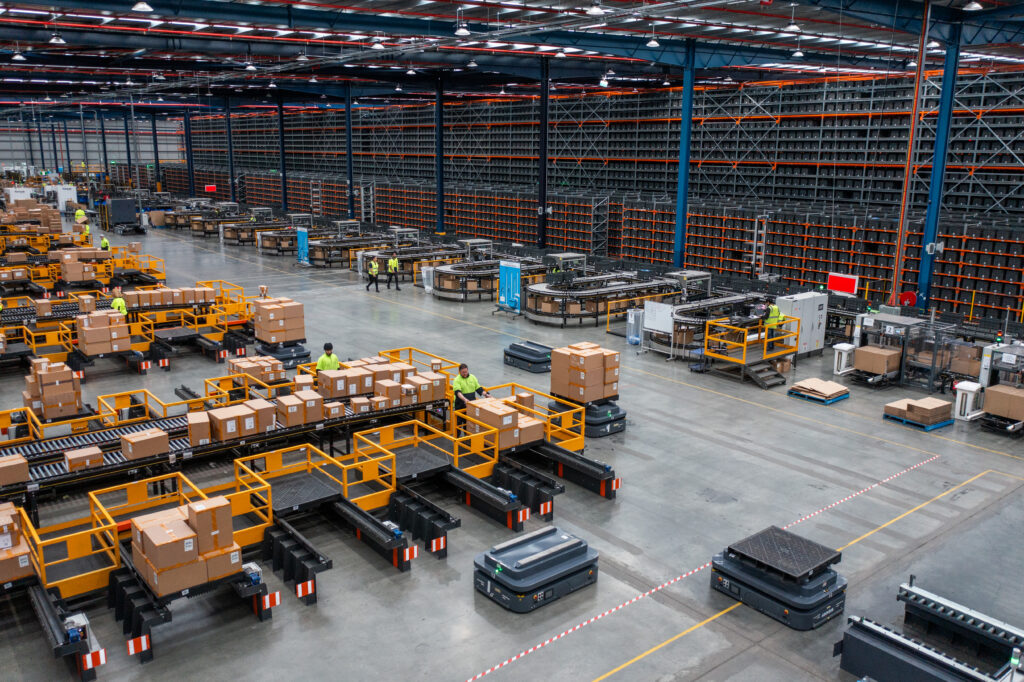
Maersk, a global leader in logistics, joined hands with Addverb to design an omnichannel fulfilment centre that is future-ready and adaptable to high SKU variability and seasonal fluctuation. SKU distribution included 60% footwear, 30% apparel, and 10% accessories and required precision, speed, and flexibility throughout their warehouse.
Strategy: The solution provided shows a fusion of fixed and flexible automation, featuring Autonomous Mobile Robots, Pallet and Carton Shuttles, and a highly efficient Multi-Carton Picking Robot.
Result: The facility currently processes 1,00,000 pieces a day being dispatched to over 2,500 distribution centres. The facility has 86,400 tote storage positions that helps achieve an increased storage throughput and retrieval efficiency.
Embedded systems such as Pick-to-Light, robotic sorters, and conveyors facilitate omni channel fulfilment and provide real-time visibility into inventory.
Maersk’s transformation is a model for high-performance, scalable logistics automation, as seen in this case study. This warehouse automation case studies can serve as a template for success study for companies looking for agile and optimised warehouses.
Multi-Deep Storage System for PAR Formulations
This case study showcases how Addverb helped with the successful transformation of the PAR Pharma’s brownfield site in Madhya Pradesh from a manual warehouse storage to a high-density multi-deep storage solution.
Strategy: Manual inventory control methods and space constraints presented key challenges during the initial phase. To address these issues, our team deployed Crane ASRS units alongside pallet shuttles and integrated them with Mobinity WCS software. This advanced setup enabled real-time visibility and ensured complete control over operations.
Result: The end result was an automated, efficient, fully realised warehouse solution which maximised storage density by 4050 multi-deep storage positions, accurately supported order picking and enabled 100% traceability by our software, resulding in reduced throughput times.
Addverb delivered advanced automation to solve critical, real-world pharma issues, and it can be particularly useful for companies in the pharmaceuticals sector looking for automation.
ITC’s Fully Automated High-Density Storage Plant
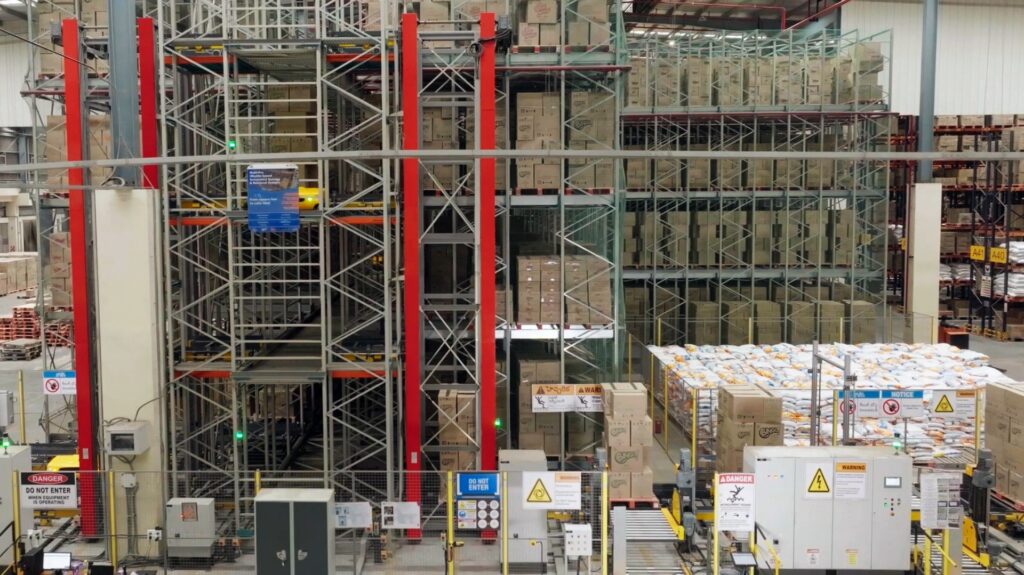
Addverb helped ITC create its largest fully automated high density storage plant in Medak.
Strategy: ITC faced challenges arising out of space constraints and throughput requirements, and we deployed 4 Multi-Deep Mother-Child Shuttle systems with 11 shuttles and smart software systems to automate inbound without interrupting existing operations.
Result: The system has an inbound throughput of 135 and outbound throughput of 160 pallets per day involving production and external vendors.
This smart scalable solution helped ITC transition from their old manual processes into high-performance automated systems pushing industry benchmarks for FMCG logistics.
Landmark Group E-commerce Fulfilment Centre
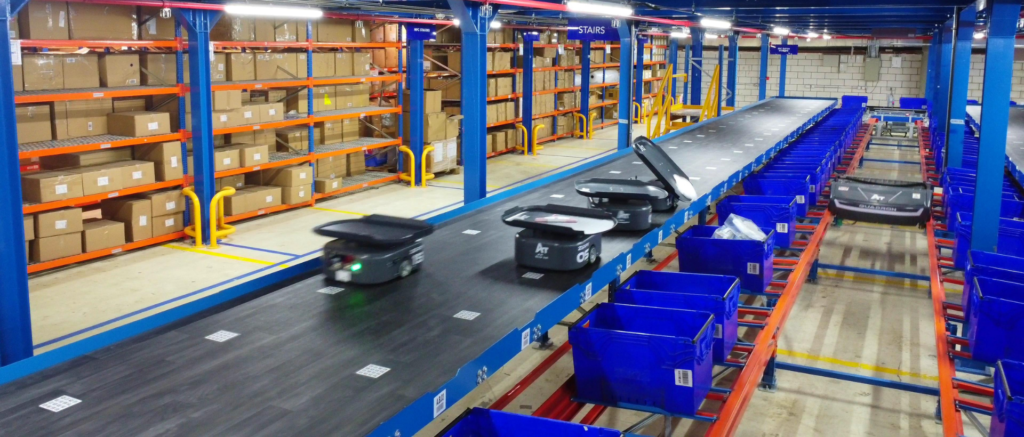
In this warehouse automation case study, Addverb delivered a flexible automation solution for Landmark Group’s Kuwait-based e-commerce fulfilment centre, which was suitable for B2C operations.
Strategy: Addverb utilized the Quazzy system; this was a smart combination of the Quadron carton shuttle for storage and Zippy robotic sorter for sorting.
Result: The flexibility was designed to manage the broad range of products while minimising fulfilment time.Our solution managed to fulfil orders through the Quazzy system at a high speed of 1,000 sorts / hour, ensuring batch picking, accurate sorting and effective outbound flow.
This warehouse automation case study illustrates how Landmark Group’s e-commerce fulfilment centre managed to achieve faster deliveries through minimised operational time and reduced errors while also processing their orders with greater efficiency across their Singapore site and e-commerce network.
Piramal PGP’s Automated Glass Distribution Centre
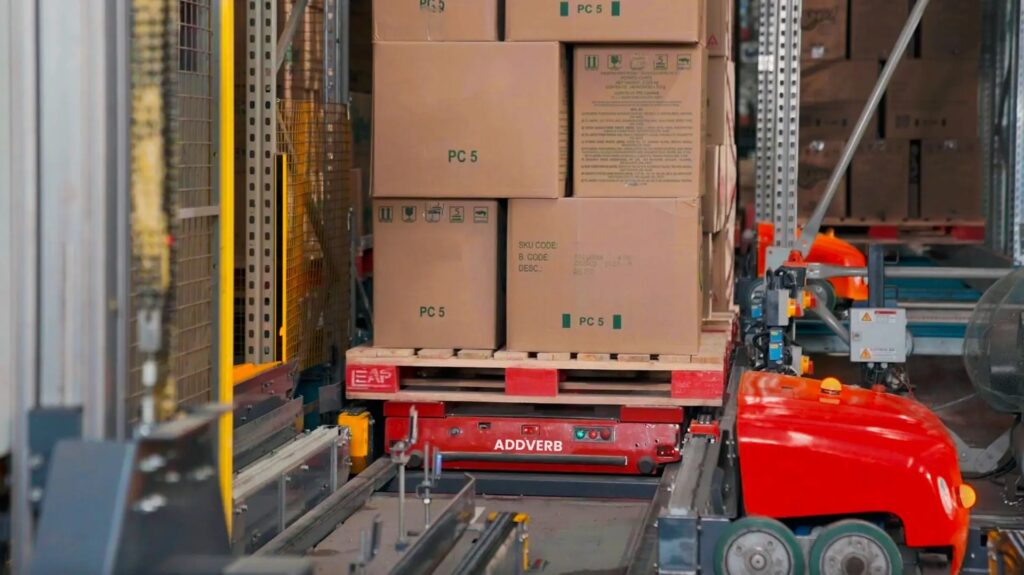
In this warehouse automation case study, our team worked with Piramal PGP to convert their traditional warehouse located in Surat to an automated glass distribution centre.
Strategy: implemented an 11-floor multi-deep storage system with 11 Mother-Child Shuttles (Multi-Pro), bi-directional lifters and Cocinity WES software to streamline their warehousing operations.
Result: This warehouse automation case study highlights how we allowed for seamless pallet flow from production, reduced product handling time, and increased inventory accuracy even in a seismic zone.
This warehouse automation case study demonstrates how we reduce product handling time, allow for faster quality checks as well as allowing efficient dispatch of products thus enhancing warehousing standards it’s believed is already set for automation in the glass packaging industry.
Conclusion
At Addverb, we are changing the face of intralogistics with state-of-the-art warehouse automation systems that deliver speed, accuracy and flexibility.
Our portfolio of warehouse automation case studies includes automated mobile robots (AMRs), shuttle-based storage systems, automated storage and retrieval systems (AS/RS), automated picking solutions, and warehouse execution systems that integrate across an entire operation.
With a deep understanding of global supply chain challenges and innovation, we help businesses, from start-ups to multinational enterprises, discover avenues for productivity and agility.
Whether you’re looking to automate a singular process or redesign your full warehouse operations, Addverb has the technology, knowledge and support to ensure your success.
Partner with Addverb and enhance the potential of your warehouse operations.

